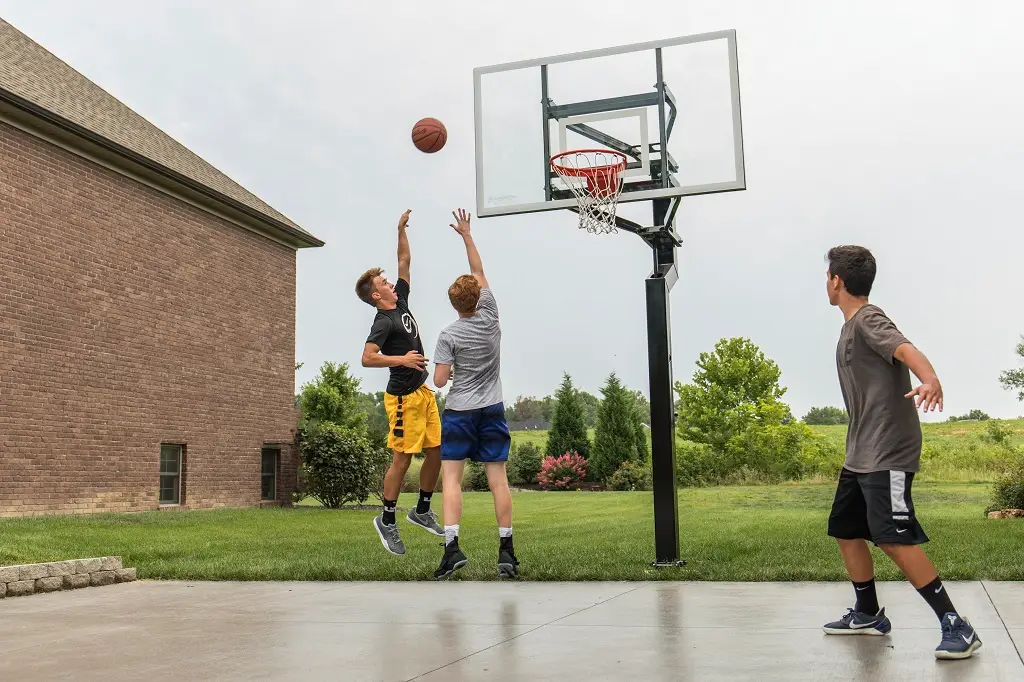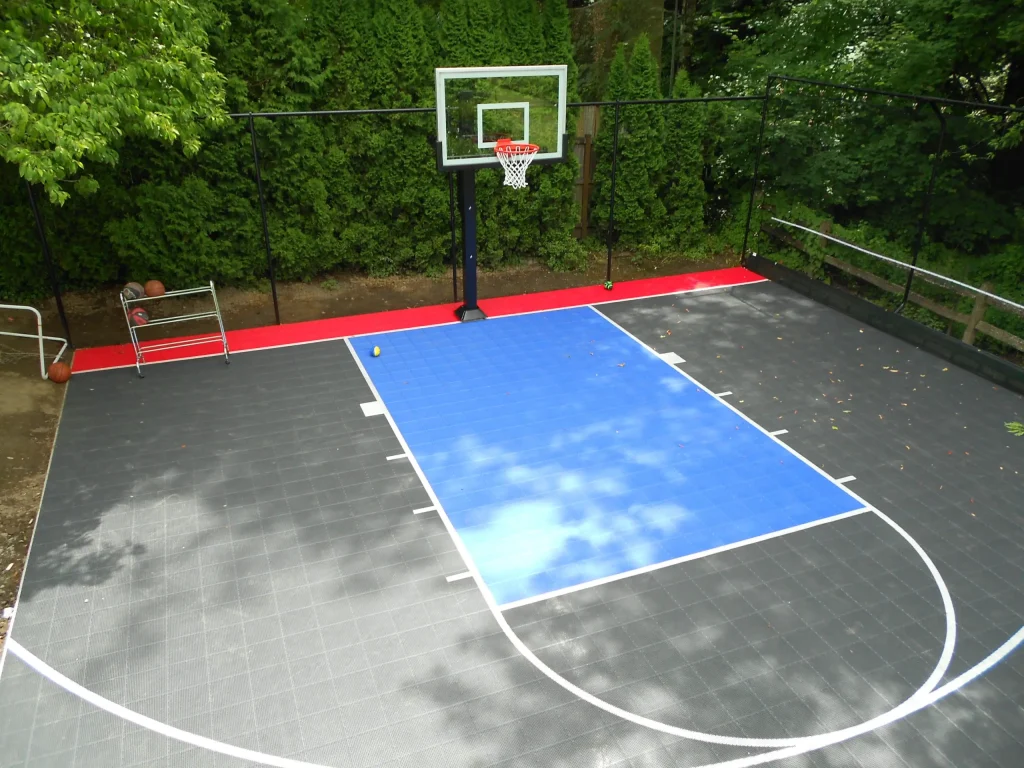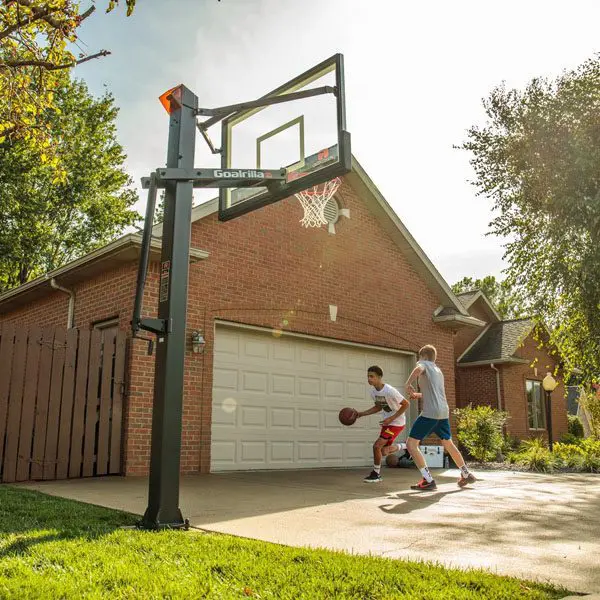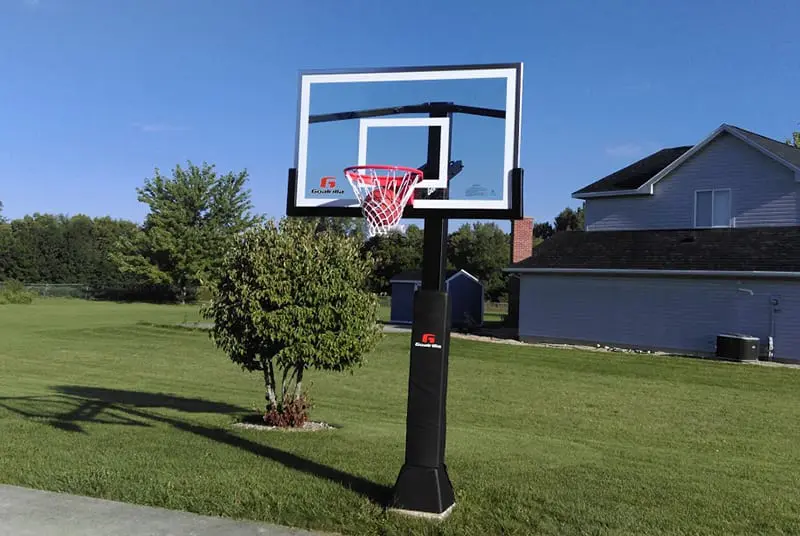If you want to take your basketball experience to the next level at home, an in-ground basketball hoop is the perfect choice. Compared to portable hoops, the best inground basketball hoops offer stability, durability, and a professional feel. Whether you want to practice your shooting technique or perform powerful dunks, a quality hoop system will help you unleash your passion. Check out the best in-ground basketball hoops below!

How to choose the best Inground Basketball Hoops
Choosing the best inground basketball hoop demands careful consideration. Space, local laws, and budget are key factors. Top-tier brands like Spalding, Goalrilla, and Silverback offer robust options.
Look for essential features:
1. Large tempered glass backboards (typically 54-72 inches or 137-183 cm wide)
2. Breakaway rims
3. Adjustable heights (usually 7.5-10 feet or 2.3-3 meters)
4. Sturdy steel construction
5. Pro-grade components
6. Weather-resistant materials
Before installation, check for underground utilities and verify court dimensions. A standard full court is 94 feet long by 50 feet wide (28.65 x 15.24 meters), but half-courts are common for home use.
A well-chosen hoop transforms your outdoor space, boosts physical activity, and provides lasting family enjoyment. It’s not just equipment; it’s an investment in health and recreation.
Consider these additional aspects:
– Backboard material: Glass offers superior rebound, while acrylic is more affordable
– Pole size: Larger diameters (5-6 inches or 12.7-15.2 cm) provide more stability
– Overhang: Greater distance from the pole allows for safer play under the basket
– Warranty: Look for comprehensive coverage on critical components
Remember, the right hoop balances quality, durability, and your specific needs. It’s not about the most expensive option, but the one that fits your space and usage patterns best.
By weighing these factors, you’ll select a hoop that stands the test of time and countless games. Your home court awaits its centerpiece – choose wisely.
What You Should Do Before Buying a Ground-Mounted Basketball Hoop?

Before buying a ground-mounted basketball hoop, consider these crucial factors:
Space: Measure your installation area. Ensure at least 30 feet (9.1 meters) of clear space for gameplay. Account for backboard overhang and concrete pad size.
Regulations: Check local laws and HOA rules. Some areas restrict permanent structures or have height limits. Get necessary permits to avoid legal hassles.
Budget: Hoops range from $500 to $5,000. Factor in installation costs, concrete work, and future maintenance expenses.
Users: For kids, choose adjustable-height systems. Serious players need pro-style features and durability.
Maintenance: Opt for weather-resistant materials like stainless steel or powder-coated metal. Check warranty terms and parts availability.
Backboard size: Larger backboards (72 inches/183 cm) offer better rebound. Smaller ones (44 inches/112 cm) suit tight spaces.
Rim type: Breakaway rims enhance safety and durability. Static rims are cheaper but less forgiving.
Pole diameter: Thicker poles (6 inches/15 cm) provide more stability. Thinner ones (3.5 inches/9 cm) are more affordable.
Adjustability: Systems with easy height adjustment accommodate various players and growing kids.
Brand reputation: Research trusted brands like Spalding, Lifetime, or Goalsetter for quality assurance.
Consider these factors to score the perfect hoop for your home court. A well-chosen system enhances gameplay and property value.
What to look for when buying an in-ground basketball?

Before installing an in-ground basketball hoop, do your homework. First, locate underground utilities to ensure safe installation. This step is crucial for avoiding costly mishaps and potential hazards. Check local regulations that might impact your plans. Some neighborhoods have strict rules about outdoor structures.
Measure your court space carefully. A regulation court is 94 feet (28.65 meters) long and 50 feet (15.24 meters) wide. However, most home courts are smaller. Ensure you have enough room for proper gameplay and safety zones.
Choose a hoop that fits your space and skill level. Backboard sizes typically range from 44 inches (111.76 cm) to 72 inches (182.88 cm). Larger backboards offer more rebounding surfaces but cost more.
Consider the material of the backboard. Tempered glass provides the best rebound, while acrylic is more affordable and durable. Polycarbonate is the toughest but has less rebound.
The rim is another crucial component. Breakaway rims are safer and more durable than fixed rims. They’re essential for dunking and aggressive play.
Don’t forget about adjustability. Some hoops allow height changes from 7.5 feet (2.29 meters) to the regulation 10 feet (3.05 meters). This feature is great for families with growing kids or mixed skill levels.
Lastly, think about maintenance. Powder-coated steel poles resist rust better than painted ones. Angled poles provide more stability and are easier to install than straight poles.
Check for underground utility lines
Safety First: Locate Underground Utilities
Before sinking that basketball hoop, pinpoint hidden hazards lurking beneath your yard. Avoid costly damages and potential injuries by identifying underground utility lines.
Call 811, America’s ‘Call Before You Dig’ hotline. Within days, utility pros will map out subterranean services on your property. These colorful markings reveal the paths of gas, electric, water, sewer, and telecom lines.
Armed with this crucial intel, strategically position your hoop. Maintain a buffer zone of at least 3 feet (0.91 meters) from any marked utilities. If your dream spot conflicts with underground infrastructure, explore alternative locations or installation methods.
This proactive approach safeguards your property and family. It also keeps you on the right side of local regulations. Remember, a little planning goes a long way in ensuring slam-dunk success for your backyard court project.
Key Takeaways:
• Dial 811 before digging
• Wait for utility mapping
• Respect marked zones
• Adjust plans if needed
• Prioritize safety over convenience
Legal restrictions
Navigating the legal maze for in-ground basketball hoops requires savvy planning. Start by scrutinizing local zoning laws and HOA rules. Many cities impose restrictions on height, size, or placement of permanent structures like hoops. Your HOA might’ve additional guidelines about sports equipment visibility or noise concerns.
Investigate setback requirements, which specify minimum distances (often 5-10 feet or 1.5-3 meters) from property lines, sidewalks, or streets. You may need a permit, so contact your local building department about the process and fees. Consider liability issues; install the hoop away from vulnerable areas like windows or vehicles.
Renters must obtain written landlord permission. Sometimes, removal upon moving out is mandatory. While not always legally required, discussing plans with neighbors fosters goodwill and prevents future disputes.
Key considerations:
1. Zoning laws
2. HOA regulations
3. Setback requirements
4. Permit necessities
5. Liability concerns
6. Landlord approval (for renters)
7. Neighbor relations
Dimensions of the court
Court dimensions are crucial when choosing an in-ground basketball hoop. They affect your game and space needs. A full-size court measures 94 feet (28.65 meters) long by 50 feet (15.24 meters) wide. Most homes can’t fit this, but smaller courts work well.
For a half-court, aim for at least 30 feet (9.14 meters) long and 25 feet (7.62 meters) wide. This space allows for shooting and basic play. Tight on space? A 20 by 15 foot (6.10 by 4.57 meter) area works for casual games and practice. Don’t forget extra room for safety and movement.
When measuring, consider the hoop’s spot and overhang. Most in-ground hoops extend 2 to 4 feet (0.61 to 1.22 meters) from the pole. Factor this into your court size. Think about the playing surface too. Concrete or asphalt are solid choices, but ensure they’re level and smooth.
By carefully planning your court’s size, you’ll pick a hoop that fits perfectly and boosts your basketball experience. Remember, the right dimensions create an optimal playing environment, enhancing your skills and enjoyment of the game.
Consider these factors:
– Available space
– Hoop placement
– Surface material
– Safety margins
With thoughtful planning, even a compact court can provide an exhilarating basketball experience. The key is to maximize your available area while ensuring safe, enjoyable play.
Top 10 best inground basketball hoops

Top 10 Inground Basketball Hoops: Elevate Your Home Court Game
Slam dunk your home court experience with these top-notch inground basketball hoops. We’ve scouted the field to bring you the cream of the crop, balancing durability, performance, and game-changing features.
1. Lifetime 72′ Mammoth Deluxe: Built like a tank, this hoop stands tall at 6 feet (1.83 meters) and can take a beating.
2. IGL In-Ground Hoop: Boasts a 54-inch (137.16 cm) tempered glass backboard, bringing pro-level play to your driveway.
3. Lifetime 1084 Height Adjustable: Versatile system caters to ballers of all sizes and skill levels.
4. Silverback In-Ground Hoop: Rock-solid stability meets smooth adjustments for a winning combo.
5. Goaliath 54′ GoTek: Marries sleek design with top-tier performance.
6. Lifetime 90020: Budget-friendly option that doesn’t skimp on quality.
7. Spalding NBA Aluminum Trim Glass: Adds a dash of NBA authenticity to your home court.
8. Goalrilla GS 54: Premium pick featuring a hefty tempered glass backboard and robust support.
9. Goalrilla GS 72: Big brother to the GS 54, offering an even larger playing surface.
10. Lifetime Products Crank Adjust: Easy height tweaks and a tempered glass backboard for sweet rebounds.
Choose your champion based on your court size, skill level, and wallet thickness. These hoops will transform your driveway into a basketball mecca, whether you’re perfecting your jump shot or hosting neighborhood tournaments.
Conclusion
Choosing the perfect inground basketball hoop just got easier. Before you slam dunk your decision, remember these crucial steps:
1. Check for underground utilities and local regulations.
2. Measure your court space – both in feet and meters.
3. Identify must-have features for your hoop.
Our top 10 list serves as your playbook. Invest in quality gear to boost your game and enjoy years of swish-worthy shots. The right hoop can transform your driveway into a mini-arena, standing tall at 10 feet (3.05 meters) and ready for action.
